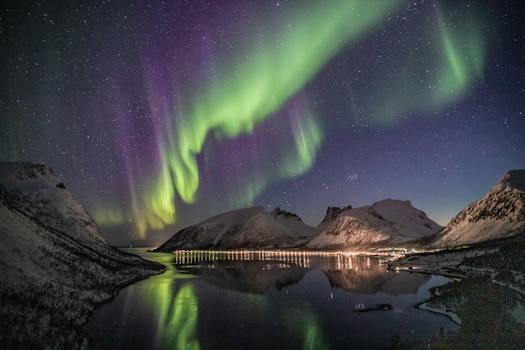

-
Table of Contents
"Challenging the Cold Truth: Debunking Misconceptions about the Freezing Point of Water"
Introduction
Misconceptions about the freezing point of water are common due to various factors.
Common Misconceptions about the Freezing Point of Water
Misconceptions about the Freezing Point of Water
Water is a fundamental substance that we encounter every day. We use it for drinking, cooking, and cleaning. We also see it in its solid form, ice, during the winter months or when we make ice cubes for our drinks. However, there are several misconceptions about the freezing point of water that many people hold. In this article, we will explore some of these common misconceptions and shed light on the truth.
One common misconception is that the freezing point of water is always 0 degrees Celsius or 32 degrees Fahrenheit. While it is true that water freezes at these temperatures under normal atmospheric pressure, it is not always the case. The freezing point of water can vary depending on various factors such as impurities, pressure, and the presence of nucleation sites.
Impurities in water can lower its freezing point. When water contains dissolved substances such as salt or sugar, the freezing point decreases. This is why we use salt to melt ice on roads during winter. The presence of impurities disrupts the formation of ice crystals, making it more difficult for water to freeze. So, if you have ever wondered why saltwater freezes at a lower temperature than freshwater, now you know the reason.
Pressure also plays a role in determining the freezing point of water. When water is subjected to high pressure, such as in deep-sea environments or under extreme conditions, its freezing point increases. This is why deep-sea creatures can survive in freezing temperatures without being frozen solid. The increased pressure prevents the water from freezing at its usual temperature.
Another misconception is that water instantly freezes when it reaches its freezing point. In reality, the process of freezing is gradual. When water reaches its freezing point, it starts to form ice crystals, but it takes time for these crystals to grow and spread throughout the liquid. This is why you may notice a thin layer of ice forming on a pond or a puddle before it completely freezes over.
Furthermore, the presence of nucleation sites can affect the freezing point of water. Nucleation sites are tiny particles or surfaces that provide a surface for ice crystals to form. When water has a high concentration of nucleation sites, it can freeze at a higher temperature. This is why distilled water, which lacks impurities and nucleation sites, can remain liquid below its usual freezing point.
In conclusion, there are several misconceptions about the freezing point of water. While it is commonly believed that water freezes at 0 degrees Celsius or 32 degrees Fahrenheit, this is not always the case. Impurities, pressure, and the presence of nucleation sites can all affect the freezing point of water. Understanding these factors can help us appreciate the complexity of water and its behavior when it comes to freezing. So, the next time you see ice forming or reach for a glass of ice-cold water, remember that there is more to the freezing point of water than meets the eye.
Debunking Myths about the Freezing Point of Water

Misconceptions about the Freezing Point of Water
Water is a fundamental substance that plays a crucial role in our daily lives. From drinking to cooking, cleaning, and even recreation, water is an essential component of our existence. One of the most basic properties of water is its freezing point, which is often misunderstood or misrepresented. In this article, we will debunk some common myths about the freezing point of water and shed light on the true nature of this phenomenon.
One common misconception is that water freezes at 0 degrees Celsius (32 degrees Fahrenheit). While this is true under normal atmospheric pressure, it is not an absolute rule. The freezing point of water can vary depending on external factors such as altitude and the presence of impurities. At higher altitudes, where atmospheric pressure is lower, water can freeze at temperatures slightly below 0 degrees Celsius. On the other hand, impurities in water, such as dissolved salts or minerals, can lower its freezing point, causing it to remain in a liquid state even at temperatures below 0 degrees Celsius.
Another myth surrounding the freezing point of water is that it always freezes uniformly from top to bottom. This misconception arises from our everyday experience of observing ice cubes in a glass of water. However, in larger bodies of water, such as lakes or oceans, the freezing process is more complex. When the temperature drops, the surface of the water cools down first, forming a layer of ice. This ice layer acts as an insulator, preventing further heat loss from the water below. As a result, the freezing process slows down, and the ice layer gradually thickens from the top down. This phenomenon explains why lakes freeze from the surface towards the bottom, rather than freezing uniformly throughout.
Furthermore, it is often believed that saltwater freezes at a lower temperature than freshwater. While this is partially true, it is not solely due to the presence of salt. When salt is dissolved in water, it lowers the freezing point by disrupting the formation of ice crystals. However, other factors, such as the concentration of salt and the presence of other impurities, also play a role in determining the freezing point of saltwater. In fact, the freezing point of saltwater can vary depending on the specific composition of the solution. Generally, saltwater freezes at temperatures below 0 degrees Celsius, but the exact freezing point can range from around -2 to -20 degrees Celsius, depending on the salinity.
In conclusion, the freezing point of water is a topic that is often misunderstood. While water does freeze at 0 degrees Celsius under normal conditions, external factors such as altitude and impurities can influence this temperature. Additionally, the freezing process in larger bodies of water is not uniform, with ice forming from the surface downwards. Lastly, the freezing point of saltwater is not solely determined by the presence of salt, but also by other factors such as concentration and impurities. By debunking these misconceptions, we can gain a better understanding of the freezing point of water and appreciate the complexity of this natural phenomenon.
Exploring the Truth behind Freezing Point Misconceptions
Misconceptions about the Freezing Point of Water
Water is a fundamental substance that we encounter every day. We use it for drinking, cooking, and cleaning. We know that water freezes at 0 degrees Celsius or 32 degrees Fahrenheit, right? Well, not exactly. There are several misconceptions surrounding the freezing point of water that we need to explore to uncover the truth.
One common misconception is that water always freezes at 0 degrees Celsius. While it is true that pure water freezes at this temperature under normal atmospheric pressure, there are factors that can affect the freezing point. For instance, if impurities are present in the water, such as dissolved salts or minerals, the freezing point can be lowered. This phenomenon is known as freezing point depression.
Another misconception is that water can only freeze at 0 degrees Celsius. In reality, water can freeze at temperatures below 0 degrees Celsius, depending on the conditions. This is known as supercooling. Supercooling occurs when water is cooled below its freezing point without actually forming ice crystals. It can happen in very pure water or when the cooling process is extremely rapid.
Furthermore, the freezing point of water can also be influenced by external factors such as pressure. When pressure is increased, the freezing point of water decreases. This is why water can remain in a liquid state at temperatures below 0 degrees Celsius when subjected to high pressure, as seen in some industrial processes or in the depths of the ocean.
It is also worth noting that the freezing point of water can vary at different altitudes. As altitude increases, atmospheric pressure decreases, which affects the boiling and freezing points of liquids. At higher altitudes, where the atmospheric pressure is lower, water can freeze at temperatures slightly above 0 degrees Celsius.
Additionally, the presence of impurities in water can affect its freezing point. Substances like salt or antifreeze can lower the freezing point of water. This is why salt is commonly used to de-ice roads during winter. By adding salt to the ice, it lowers the freezing point of water, preventing it from freezing and making it easier to remove.
Understanding these misconceptions about the freezing point of water is crucial, especially in scientific and industrial applications. It highlights the importance of considering various factors that can influence the freezing point, such as impurities, pressure, and altitude. By acknowledging these factors, we can make more accurate predictions and calculations in fields like chemistry, physics, and engineering.
In conclusion, the freezing point of water is not as straightforward as we may think. It can be influenced by impurities, pressure, altitude, and even supercooling. By debunking these misconceptions, we gain a deeper understanding of the complexities of water and its behavior. So, the next time you encounter ice or frozen water, remember that there is more to it than meets the eye.
Q&A
1. What is a common misconception about the freezing point of water?
A common misconception is that the freezing point of water is always 0 degrees Celsius (32 degrees Fahrenheit).
2. Is it possible for water to freeze at temperatures above 0 degrees Celsius?
Yes, it is possible for water to freeze at temperatures above 0 degrees Celsius under certain conditions, such as when pressure is applied or impurities are present.
3. Can water remain in a liquid state below 0 degrees Celsius?
Yes, water can remain in a liquid state below 0 degrees Celsius if it is supercooled, meaning it is cooled below its freezing point without solidifying.
Conclusion
In conclusion, there are several misconceptions about the freezing point of water. It is commonly believed that water freezes at 0 degrees Celsius (32 degrees Fahrenheit), but this is not always the case. Factors such as impurities, pressure, and the presence of nucleation sites can affect the freezing point of water. Additionally, supercooling can occur, causing water to remain in a liquid state below its normal freezing point. Therefore, it is important to understand these factors and misconceptions to have a more accurate understanding of the freezing point of water.












